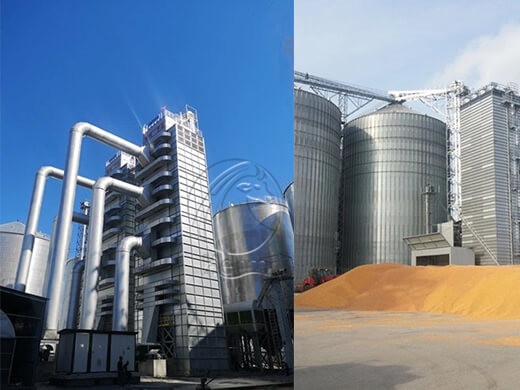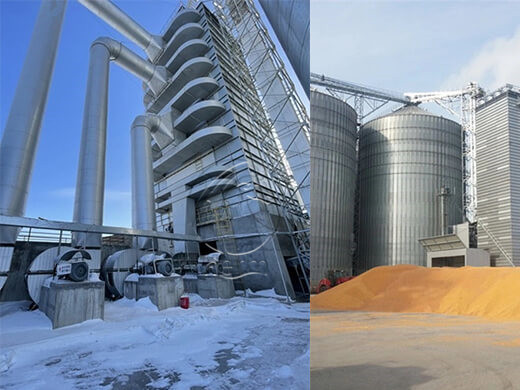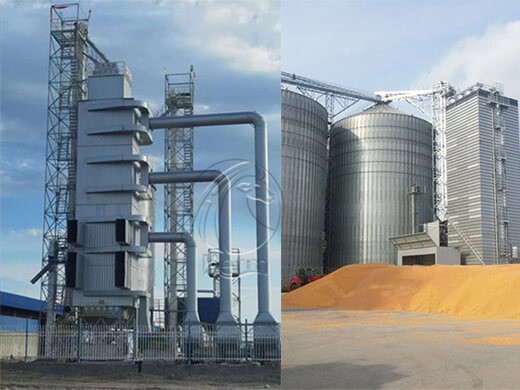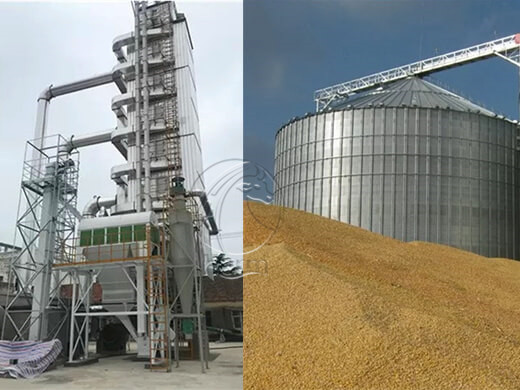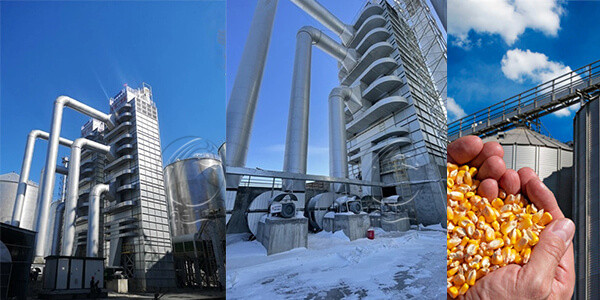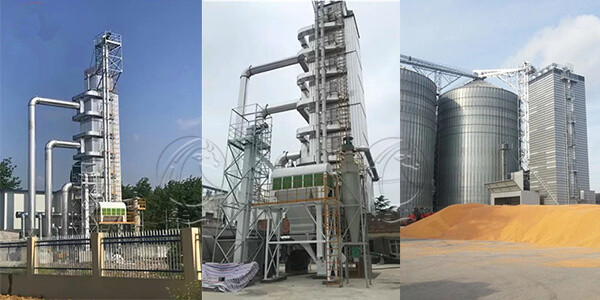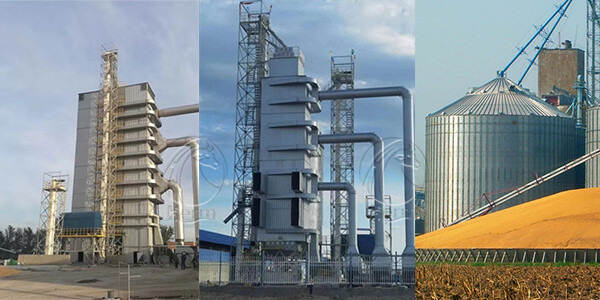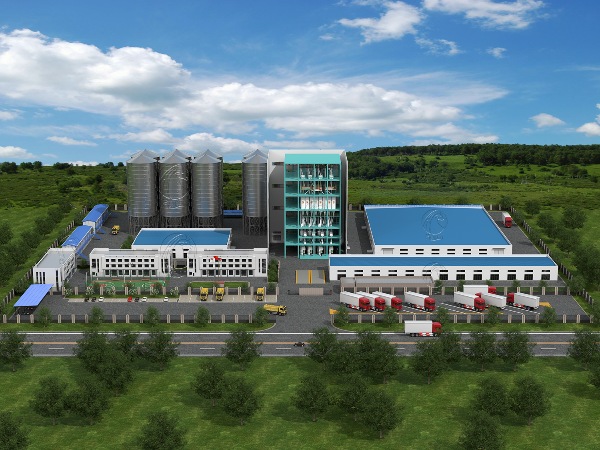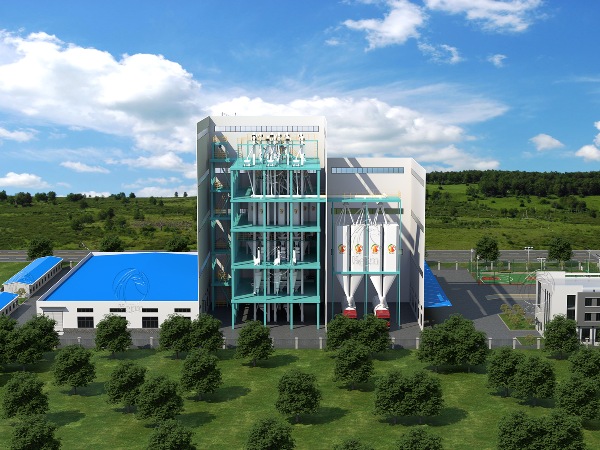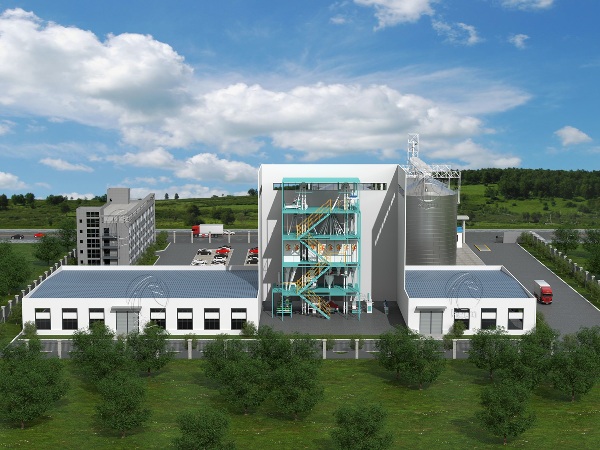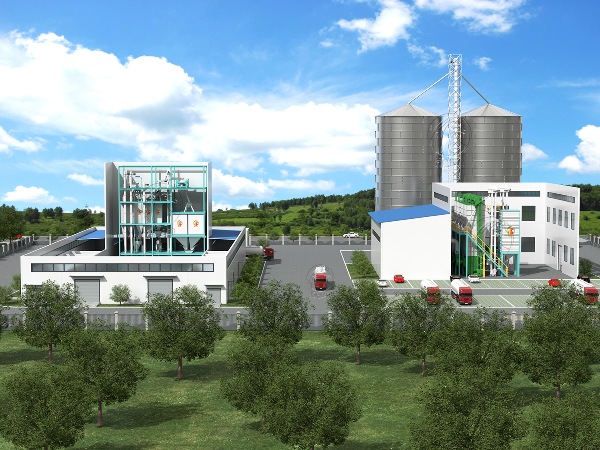Grain Dryer Machine Introduction
Our grain dryer incorporates the advantages of advanced models from both domestic and international markets, while leveraging our extensive experience in design, research, development, and manufacturing, as well as insights into varying humidity conditions across different countries and regions. Customized and innovatively developed, our grain dryer is tailored to meet the diverse needs of users, offering a range of drying processes such as mixed-flow, concurrent-flow, and countercurrent-flow, adapted according to specific user requirements. We provide bespoke end-to-end solutions, addressing users' concerns about grain drying comprehensively.
Our grain dryer boasts strong adaptability to various grain types and climatic conditions, making it suitable for drying a wide range of crops including corn, rice, soybeans, wheat, sorghum, and rapeseed. It utilizes clean hot air as the heating medium, employing a hot air furnace fueled by coal, oil, natural gas, straw, rice husks, or steam. Operating on a continuous drying cycle, this grain dryer offers high efficiency and a high degree of automation and intelligence. It can be installed outdoors and is suitable for use in grain depots, feed processing plants, grain and oil processing facilities, and other similar settings.
Make a Quick Inquiry Now !
Grain Dryer Machine Working Principle
Our grain dryer utilizes hot air as the heating medium to dry the grains, consisting mainly of an inlet air ventilation section and an angular ventilation box internally. The angular box is filled with grains, which flow downward naturally, while hot air enters through the inlet air ventilation section, passes through the grain bed downward, and exhaust gases are expelled through the exhaust angular box. As the hot air passes through the grain bed, heat and moisture are transferred to the grains; the hot air transfers heat to the grains, raising their temperature and causing moisture to evaporate into the air, eventually being expelled as exhaust. The heated grains flow downward to the tempering section, where they undergo tempering to balance the temperature and moisture content both internally and externally, achieving uniform drying.
Make a Quick Inquiry Now !
The wet grains to be dried enter the grain dryer through the uniform grain mechanism. When the grains reach the low level in the storage section, the hot air blower starts to supply hot air for drying. As the grains reach the mid-level in the storage section, the level sensor triggers the discharge motor to start unloading the grains. An alarm is triggered when the grains reach a high level in the storage section, signaling to stop the grain feeding. Meanwhile, the unloading process continues until the grain level drops back to the mid-level, at which point grain feeding resumes, thus maintaining a dynamic balance in the system.
After passing through the storage section, the wet grains enter the air distribution section where they are evenly distributed among the ventilation pipes. Hot air flows outside the ventilation pipes, heating the grains. Subsequently, both the grain flow and hot air move downward into the drying section, where the grains are further heated, causing moisture to vaporize. The vaporized moisture is expelled as exhaust through the exhaust angular box, resulting in dried grains.
Upon completion of the drying process, the grains enter the cooling section where they are cooled to an appropriate temperature. Finally, the cooled grains are discharged through the discharge chute in the unloading section.
Make a Quick Inquiry Now !
Grain Dryer Machine Features
1. Large precipitation reduction, with a maximum single-machine rainfall reduction of up to 25% per cycle.
2. Strong adaptability, suitable for drying various materials such as corn, rice, and rapeseed in all regions.
3. Thorough and uniform grain drying, adequate tempering, and thorough cooling allow dried grains to be stored directly.
4. Utilizes clean air as the drying medium, pollution-free, resulting in high-quality grains after drying.
5. Incorporates multiple energy-saving technologies, with low drying energy consumption, thus reducing drying costs.
6. Mechanized continuous operation, stable performance, and easy operation.
7. Utilizes centralized automatic control, saving labor costs and ensuring precise control.



